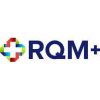Compliance planning and execution involves the use of ubiquitous checklists, tables or other tools designed to ensure strict compliance to regulatory requirements. These tools are helpful in ensuring your processes address the letter of the law. And, this approach is quite helpful in demonstrating compliance during an audit and familiarizing staff with the linkages between your processes and the regulatory requirements. However, much like a pre-flight checklist is not a comprehensive instruction for flying a plane, the use of these tools does not represent a comprehensive implementation of an effective quality management system (QMS). Although this “checkbox” approach is widespread in both the operation and auditing of quality management systems, seeking better implementation is advantageous to your organization, your customers, and ultimately the patients you serve.
In the seemingly rigid world of compliance, it is indeed challenging to consider new methods and tools in the QMS. And, in sailing uncharted territory, there is some uncertainty in implementing new processes in a highly regulatory industry. However, consider this a unique opportunity to be creative while vastly improving the practices in your organization. Using a risk-based approach to these changes will address some uncertainty regarding unintended consequences of using new methods and processes.
Examples and Drawbacks of QMS Checklists
As described above, these tools are used throughout the QMS and they are useful in even the most sophisticated QMS utilizing the most advanced best practice. Examples include:
- Gap analyses for determining unmet regulatory requirements under new regulations or regulations that will now impact the organization due to business goals (e.g., seeking market authorization in new geographic areas)
- Internal quality audits and process reviews
- Supplier assessments and supplier quality audits
- Management review
- Product realization and change control
- Training and training effectiveness
Again, checklist tools are quite useful in the management of these areas. However, drawbacks of simple checklists include:
- Without focus on the system, weaknesses may not be detected where processes are interrelated
- Real-world scenarios are not adequately assessed through checklists
- A strict checklist approach may not allow a singular, streamlined process where different or conflicting requirements exist
- Limited insight is available into employee knowledge and there are fewer opportunities to solicit feedback from employees on process improvement
- A rigid checklist format does not encourage employee engagement
Improving QMS Tools
Let’s review examples that can supplement or replace your existing checkboxes to achieve the benefits described in the preceding section.
- Implement system-based practices throughout the QMS, starting with internal audits
Rather than simply auditing to a checklist of regulatory or internal requirements, add a process review for one or more processes in the audited area. Such a review identifies the inputs to the process, the outputs of the process, the personnel or functional areas involved in the process, training requirements and program, resources (infrastructure, instruments, software, etc.) used in the process, and monitoring and measurement tools and methods for the process.
By forcing a review of the inputs and outputs of the process, you gain a better understanding of the process linkages and can therefore ensure your processes are adequately connected. Through an evaluation of personal, functional areas, and training, you can assess the competence of the personnel and the effectiveness of your training program. Evaluating the resources for a process allows you to verify that you have implemented a holistic validation master plan. Lastly, by assessing your monitoring and measurement methods, you can more readily achieve continual improvement.
- Evaluate real-world scenarios starting with document control In addition to a checklist review of new or revised procedures as part of your document control procedures, consider adding a process review to the checklist. Create a mock scenario that reflects a situation that is possible or likely under the procedure in question. For example, when creating or revising a procedure for handling non-conforming material, create a scenario by which you identify such a situation. For minor changes, assessing only a portion of the process is appropriate when adequately justified. Evaluate that the outputs are appropriate based on the fictional inputs you have created and that the interactions with other processes are as intended. Also, verify the expected resources are adequate.
- Evaluate opportunities to streamline processes or address varying or conflicting regulatory requirements, starting with the periodic review of procedures Various regulatory requirements mandate a periodic review of your internal procedures for compliance and effectiveness. Use this opportunity to diagram out these processes and identify improvements. For example, use sticky notes and a white board to map out the process. This allows you to easily move individual actions around and identify opportunities to streamline. As procedures grow and change, inefficiencies often wind they way into the process. And, where there are varying or conflicting requirements, this activity allows you to assess whether conflicting requirements are best defined in separate procedures or how they are best addressed in a single procedure. For example, regulatory reporting of adverse events often requires evaluation for reporting in multiple countries. Depending on the size and organization of your company, one approach may be better than the other.
- Improve your training program, even consider working backwards starting with training effectiveness assessment By requiring appropriate training effectiveness verification for critical tasks, you assess the knowledge of your employees and gain insight into the quality of the process from their perspective. For example, by implementing a training verification task (e.g., knowledge test, observation of a process, or review of process output), you evaluate the employees’ understanding of the documented process and open dialogue for feedback from the employee on the task. It is often ineffective and burdensome to maintain a dedicated employee feedback process when this can be performed with existing requirements. For example, in performing a training effectiveness check on a procedure for assembly of widgets, you may choose to observe the process, comparing to the documented procedure. During this process, open dialogue with the observed employee and solicit feedback on their opinion of the process. Perhaps the employee may identify a way to consolidate operations or is aware of an informal, in-process rework that may need to be documented.
- More effectively engage employees starting with executive management during management review By continually improving the content and delivery of your management review, you more effectively engage executive management, and your presentation and methods become a model for other areas of the QMS. Rather than simply reviewing the QMS in accordance with a static outline or checklist, determine how you can reflect other principles described previously. That is, consider reviewing interaction of processes during management review, not just the results and performance of individual areas. Explain how quality metrics are obtained and ways they might be improved with different resources. Even consider subjecting your executive management to a verification activity at the end of the presentation. By expanding beyond the checklist in management review, you foster an environment of continual improvement and a corporate culture where training is valued and emphasized.
These examples are only a sampling of the ways you can begin to improve your systems and move beyond the checkbox mentality. Approach your role in the QMS with passion, creativity, and a servant leader approach. And, don’t be afraid to implement tools observed or used in other organizations—best practices wouldn’t be possible without exchanges such as this between organizations.







